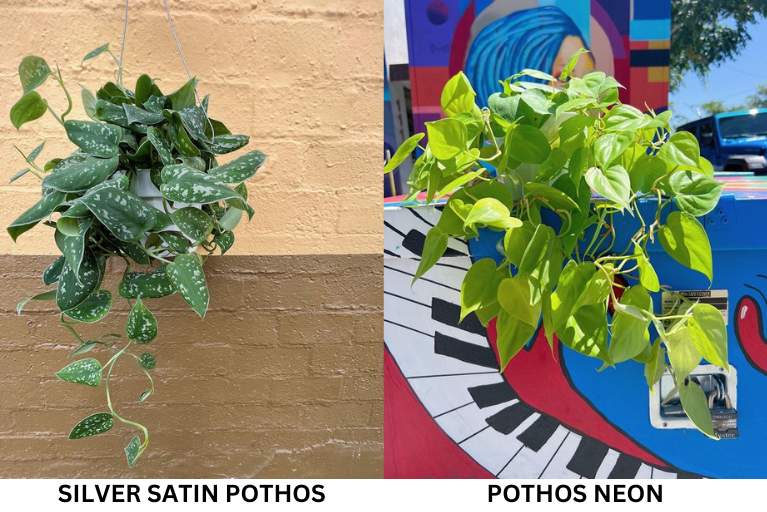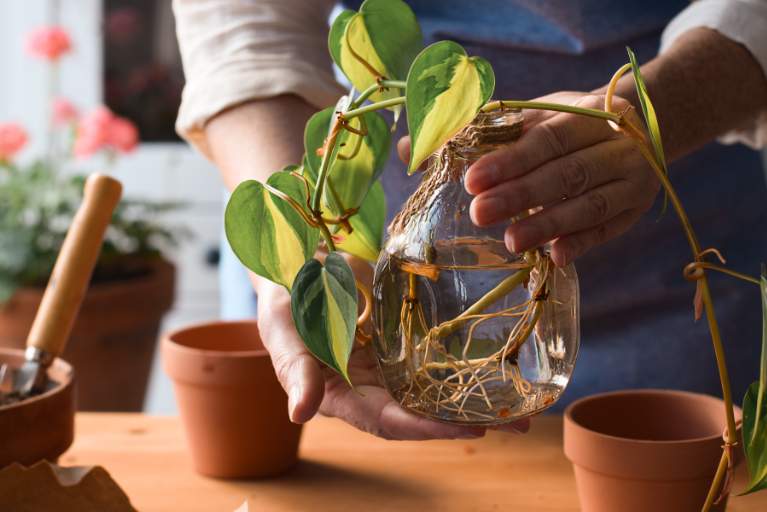You can never have just one house plant. Once you see how much one brightens your mood and breathes life into the room, you’ll need to buy a second. Besides, you don’t want that first one to get lonely, do you?
And so the rationalizing continues, and before you know it you’re well on your way to having a home jungle (aka a house plant addiction).
The problem now is that while your home looks fresh and full of life, the same can’t be said for your bank balance.
Keeping house plants can be expensive. The average American plant owner spends $566 on their habit during their lifetime. Add in the cost of pots, potting mix, and fertilizer, and it’s clear that home jungles don’t come cheap.
Counting the cents isn’t much fun. But for many of us, it’s the sensible thing to do. So how can you keep enjoying the benefits of house plants and growing your collection without withering away your bank balance?
8 smart and easy ways to save money on house plants
Satisfying your addiction is doable, even on a budget. Having cultivated and sold thousands of plants over my 20 years of being a florist (and keen gardener), here are my money saving houseplant tips.
1.Choose popular plants
Rare varieties of house plants such as the Lemon Lime Maranta will certainly keep your collection interesting. Unfortunately, ‘rare’ often comes with a high price tag. Indulge in these plants when your cash flow is settled, or when there’s less of a ‘plantfluencer’ buzz around them.
In the meantime, bolster your collection with popular plants such as peace lilies, ZZ plants, and pothos (Devil’s Ivy). Pothos is particularly good because it comes in many different varieties, making it a simple and affordable way to add color and excitement to your collection.

2. Buy house plants that suit your home
Continually replacing plants that die is expensive. If this sad cycle sounds familiar, revisit your plant’s ideal growing conditions and honestly assess how well your home environment meets those conditions.
For example, if your place doesn’t get much direct sunlight, choosing a plant for low light homes will serve you better. And if you have spaces that get full sun and heat up, then succulents and snake plants will be perfect.
3. Check the health of the plant
Sick and slightly damaged plants tend to end up in the bargain section. While it’s honorable (and sometimes possible) to try and nurse them back to health, it’s not a good option when you’re on a budget. The chance of the plant not pulling through is pretty high. And while you may save a few bucks initially, it’s a false economy as you’ll end up having to buy another.
Make sure the plant you’re buying is healthy by looking for:
- new growth and fresh foliage
- bright, green leaves that aren’t turning brown or yellow
- roots that aren’t growing out of the pot’s drainage holes or on top of the compost
- pests on the underside of the leaves or close to the stem. (If there are pests, forget it.)
4. Propagate the plants you have
When you don’t have any wiggle room in your budget, make more of the plants you already have by propagating them. Yes, it takes more effort (and a lot more time) than picking up a ready-grown plant for the nursery. But it’s a way to grow your houseplant collection for free (well, other than the cost of potting mix).
Before grabbing your scissors, freshen up on your plant propagation knowledge with our beginner’s guide to propagating plants and tips on how to plant succulents in a pot.
If you have more cuttings than you need, swap them with your houseplant-loving friends. That way you’ll both get new plant varieties for your collections.

5. Temporary plant swaps
Not into the idea of propagating your plants and swapping the cuttings? How about swapping entire plants with friends, family, and likeminded house plant collectors in your local area?
Look for gardening groups on social media. And if you can’t find one nearby, set one up. Get each member to list the plants they have, and then swap for a month or so. You’ll not only get to experience taking care of different types of plants, but also have something new to look at in your home.
6. Decorate plain pots
Ready-decorated and glazed pots will always be more expensive than plain ones. An easy way to save money is to buy basic terracotta and monochrome pots, and then decorate them yourself. (Or give them to an arty friend if you have one.) Not only will you have a pot that can’t be bought in any store, you’ll also have one that fits perfectly with your décor.
7. Keep your plant care basic
Wanting the best for your plants is no bad thing. But when you’re on a budget you need to ask yourself, “Do I really need that grow light?” and “Can I manage with the less expensive potting mix?” And the answer will usually be “No” and “Yes.” Plants have been surviving without them for millennia.
When possible, avoid getting sucked into house plant gizmo marketing. Instead, DIY your house plant care. For example, you could start making your own potting mix.
8. Where to find cheap house plants
Neighbors having yard sales, small markets, craft fairs, and online marketplaces are great for scoring cheap house plants. When people are looking to sell plants it’s usually because:
- they don’t have the space or the need for them in their home or yard
- they’re moving and can’t take their plants with them.
And the fact they need to get rid of their plants quickly means they’ll likely be selling them at a much lower price than you’d find at a nursery. Just make sure you check the health of the plant before you hand over your hard-earned money.
Check local stores and nurseries for houseplant sales
As with most businesses, garden centers, florists, and nurseries have sales and special offers to sell off old stock to make way for new items. For example, at our Gaia Flowers store we have a plant sale on the first Saturday of every month where we knock as much as 20% off the original price.
Follow us to make sure you don’t miss the details on our next sale of beautiful plants we have in store. You’ll also get free advice on how to make the most of your plants. (And you can’t get cheaper than free.)
 Order by Noon for Same Day Flower Delivery
Order by Noon for Same Day Flower Delivery